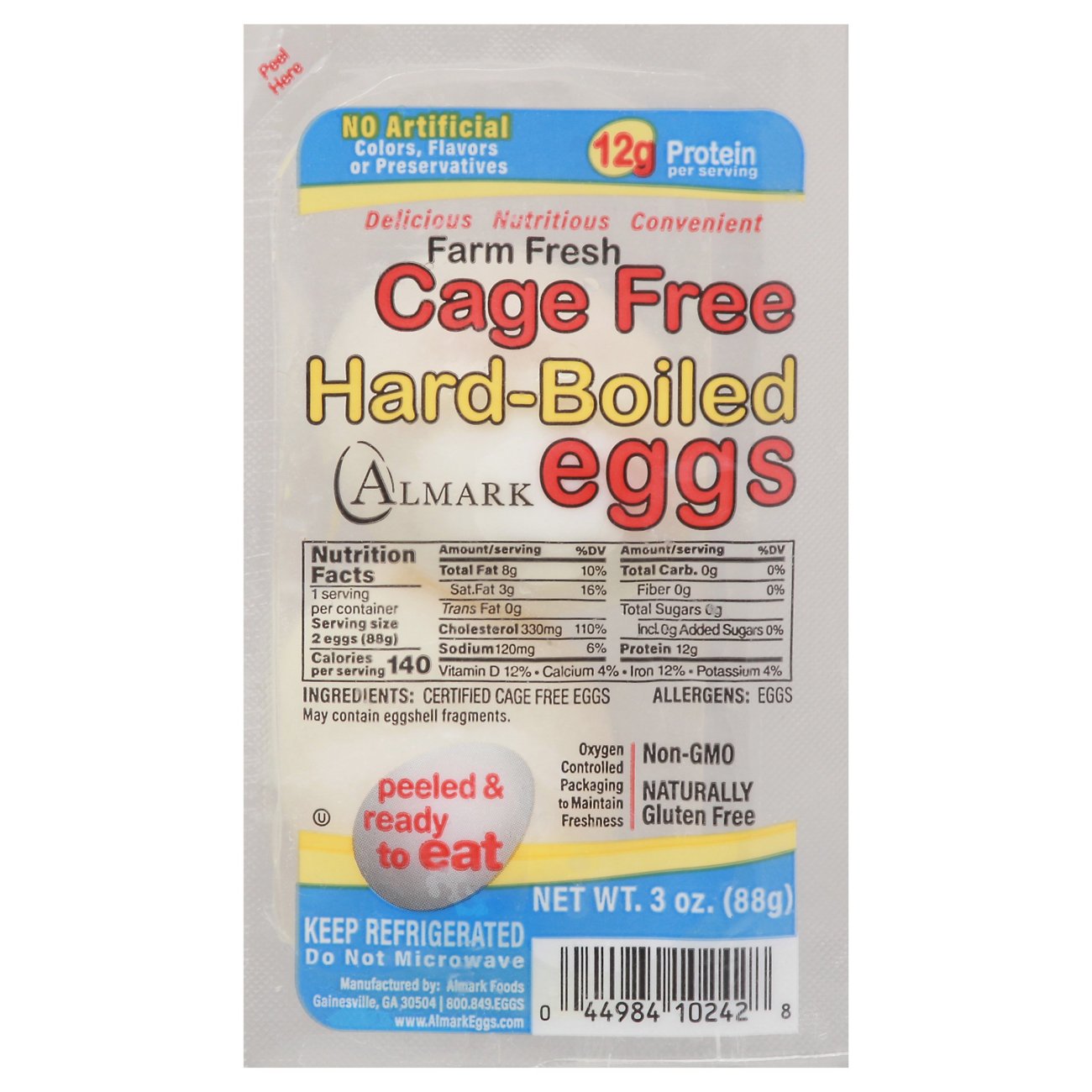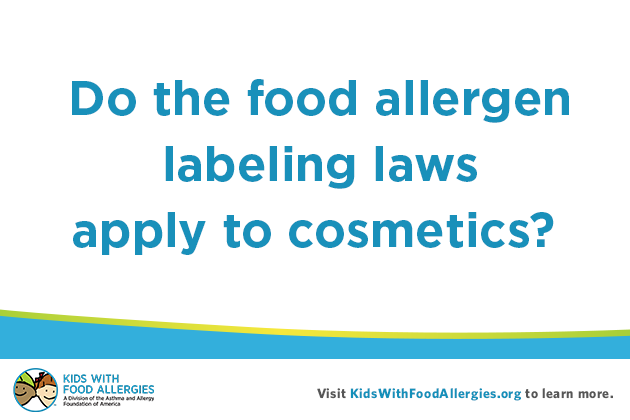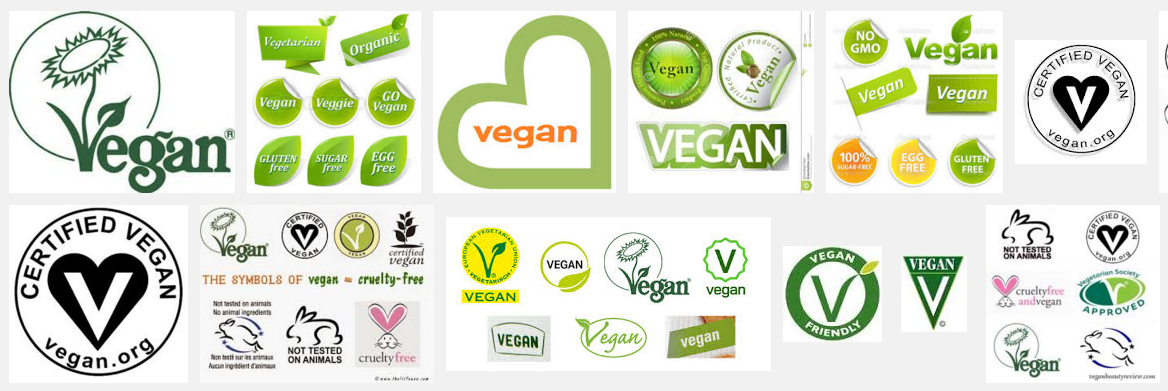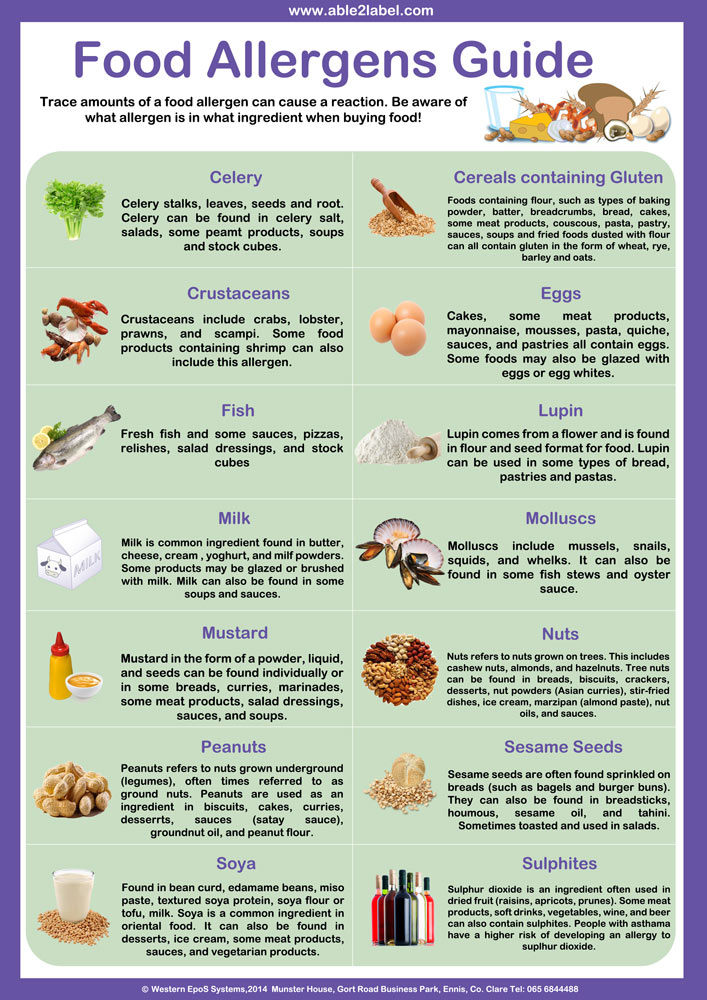44 allergens required on food labels
FDA: Food Labels Must List Allergens - WebMD Fish. Crustacean shellfish (like shrimp) Tree nuts. Peanuts. Wheat. Soybeans. The labeling will list these ingredients or say "contains" followed by the name of the source of the food allergen ... Must allergens be declared on labels? - USDA Must allergens be declared on labels? Jul 17, 2019 Knowledge Article Yes. All food products containing two or more ingredients are required by federal regulations to bear an ingredients statement listing all ingredients by common or usual name in descending order of predominance.
Allergen Labeling - TTBGov consistent with the provisions of the food allergen labeling and consumer protection act of 2004, falcpa, the interim rule defines a "major food allergen" to mean any of the following: milk, egg, fish (for example, bass, flounder, or cod), crustacean shellfish (for example, crab, lobster, or shrimp), tree nuts (for example, almonds, pecans, or …

Allergens required on food labels
Food Allergen Labeling - wheat allergy warning hidden places you may ... Food Allergen Labeling - 15 images - fsma food safety plan templates food safety, detecting food allergens, eu nutrition facts label food labeling software esha research, allergy warning label on food package stock photo alamy, Allergen labelling - Food Standards In February 2021, new plain English allergen labelling requirements were introduced for how certain foods known to be common allergens are declared. These changes will mean food allergen information is clearer and easier to find on food labels. Food businesses have three years to update their labels to meet the new requirements. Food Allergen Labelling - Canada.ca The Food and Drug Regulations require that most prepackaged foods carry a label and that the ingredients appear on labels in decreasing order of proportion. However, some ingredients used in food products which were previously exempt from declaration in the list of ingredients, (e.g., components of margarine, seasoning and flour) will now be required to appear on food labels also.
Allergens required on food labels. Food Allergen Labeling Law Requirements and Exceptions Tree nuts (e.g., pecans and almonds) Peanuts Wheat, and Soybeans According to the FDA, these are the allergens that cause the most problems in the U.S. Foods that contain these allergens need to list them in the ingredients label on the package. In addition, manufacturers must use use the "common or usual name" of the allergen. › food › food-labeling-nutritionQuestions and Answers on the Gluten-Free Food Labeling Final ... Jun 30, 2022 · Manufacturers may choose where they place a "gluten-free" claim on their food labels, provided that the claim does not interfere with other FDA-required labeling information and meets all other ... EOF › food-labelsFood labels - Better Health Channel Allergens on food labels Food labels are important for people with food allergies or intolerance. The main foods or ingredients that may cause severe adverse reactions must be declared on the label no matter how small the amount. Common foods that may cause allergies include: • peanuts and other nuts • fish and shellfish
› en › health-canadaCommon food allergens - Canada.ca Canadian labelling regulations require that the most common food, and food ingredients which can cause life-threatening or severe allergic reactions, are always identified by their common names so that consumers can easily recognize them on food labels. For more details on Canada's food allergen labelling regulations, and other information on ... How to Read a Food Label - FoodAllergy.org Starting Jan. 1, 2023, allergen labeling of sesame will be required under the Food Allergy Safety, Treatment, Education and Research (FASTER) Act of 2021. Ingredients and manufacturing processes can change without warning. Make a habit of carefully reading labels to ensure you avoid any potential allergens. "May Contain" Statements Food Labels: Read It Before You Eat It! - AAAAI Ingredients of these most common eight allergens must be labeled with clearly recognized English names of the food source as listed above. The "contains" statement is "voluntary", but if used, must include ALL of the allergenic ingredients from the list of eight allergenic sources as described in item 14 of the 2006 guidance document. Allergen guidance for food businesses | Food Standards Agency This means that food business operators must: provide allergen information to the consumer for both prepacked and non-prepacked food and drink. handle and manage food allergens effectively in food preparation. Food businesses must make sure that staff receive training on allergens. Staff can complete our free food allergy training.
inspection.canada.ca › food-labels › labellingList of ingredients and allergens on food labels - Canadian ... It is not required to declare food allergens or gluten that is present in a prepackaged product as a result of cross-contamination [B.01.010.1(3), FDR]. The Food and Drug Regulations (FDR) specify the manner in which ingredients and components must be declared, including grouping sugars-based ingredients , common names , and declaring food ... › regulatory-information › search-fdaGuidance on FAQS on Food Allergens As originally enacted in 1938, section 403(i) of the Federal Food, Drug, and Cosmetic Act required that the label of a food that is fabricated from two or more ingredients declare each ingredient ... › food › food-labeling-nutritionFood Allergies | FDA Jun 23, 2022 · People with food allergies should read labels and avoid the foods they are allergic to. The law requires that food labels identify the food source of all major food allergens used to make the food. Have Food Allergies? Read the Label | FDA milk egg fish, such as bass, flounder, or cod crustacean shellfish, such as crab, lobster, or shrimp tree nuts, such as almonds, pecans, or walnuts wheat peanuts soybeans The law requires that food...
How To Read Food Labels For Allergens | Allergy Force In 2006, FALCPA (The Food Allergen Labeling and Consumer Protection Act of 2004) became effective and required all food labels in the U.S. to list ingredients that may cause allergic reactions. FALCPA is regulated by the FDA. While individual ingredients can obtain exemptions, the FDA cannot simply add a new major food allergen (MFA) to the ...

How to manage food labels to ensure allergens are clearly noted on any product | 2020-07-29 ...
Allergen Labeling Requirements — FDA Reader Packaged foods for sale in the US which were labeled after January 1st, 2006 must have an allergen statement. This includes single-ingredient packaged foods (i.e. canned tuna) Fresh fruits and vegetables do not require an allergen statement.
Living with Food Allergies | Lurie Children's Reading labels can be time-consuming and tiring. The Food Allergen Labeling Consumer Protection Act (FALCPA) was passed in 2004 helping to provide food allergy families assistance with easier and clearer labeling requirements. FALCPA requires that all packaged food list the 8 major food allergens in plain (clear and understandable) language.
Allergen labelling for food manufacturers | Food Standards Agency 14 allergens If your product contains any of the main 14 allergens as an ingredient or processing aid, it must be included on the label. The 14 main allergens are: celery cereals containing gluten...
Understanding the FDA Food Allergen Labeling Requirements Are We Required to List Allergens on Our Food Labels? Yes, manufacturers need to declare the presence of allergens in their product if it has any. It is required by law under the Food Allergen Labeling and Consumer Protection Act, which is simply known as "FALCPA." Food allergies occur when some types of food trigger an immune reaction.
› food-shopping › food-labelsFood labels - Coeliac UK This new law will change the way food businesses provide allergen labelling for prepacked food, such as a prepacked sandwich sold in a coffee shop. All prepacked for direct sale (PPDS) products will be required to have a label with an ingredients list and the allergens contained emphasised on the list.
Food Allergen Labelling - Canada.ca The Food and Drug Regulations require that most prepackaged foods carry a label and that the ingredients appear on labels in decreasing order of proportion. However, some ingredients used in food products which were previously exempt from declaration in the list of ingredients, (e.g., components of margarine, seasoning and flour) will now be required to appear on food labels also.
Allergen labelling - Food Standards In February 2021, new plain English allergen labelling requirements were introduced for how certain foods known to be common allergens are declared. These changes will mean food allergen information is clearer and easier to find on food labels. Food businesses have three years to update their labels to meet the new requirements.
Food Allergen Labeling - wheat allergy warning hidden places you may ... Food Allergen Labeling - 15 images - fsma food safety plan templates food safety, detecting food allergens, eu nutrition facts label food labeling software esha research, allergy warning label on food package stock photo alamy,












Post a Comment for "44 allergens required on food labels"